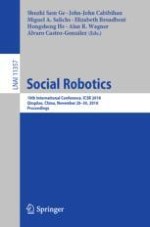2018 | OriginalPaper | Buchkapitel
When Should a Robot Apologize? Understanding How Timing Affects Human-Robot Trust Repair
verfasst von : Mollik Nayyar, Alan R. Wagner
Erschienen in: Social Robotics
Aktivieren Sie unsere intelligente Suche, um passende Fachinhalte oder Patente zu finden.
Wählen Sie Textabschnitte aus um mit Künstlicher Intelligenz passenden Patente zu finden. powered by
Markieren Sie Textabschnitte, um KI-gestützt weitere passende Inhalte zu finden. powered by
